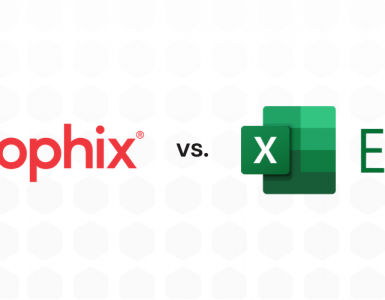There is a growing recognition among medium-sized businesses that there are better solutions for corporate management than spreadsheets. But not every available solution suits every company size. BARC analyst Dr. Christian Fuchs looks at the key requirements that software solutions should meet to be deemed suitable for use in medium-sized companies.
When large companies are evaluating corporate performance management (CPM) solutions, the most important selection criteria are usually quite clear: performance and scalability are at the top of the list, followed by integration into the existing (usually complex) system landscape.
But what are the requirements of medium-sized companies? Although there is some overlap, the order of priority is different. This is due in part to the typically limited human, infrastructure and financial resources of medium-sized companies. For a CPM selection project, this means, above all, an effective and efficient approach. “Functioning solutions” are more important than perfectionism.
Because of these significant differences, it quickly becomes clear that a “one size fits all” approach is not feasible. This is not a problem, however, because there is a vast selection of CPM tools on the market for every conceivable situation.
In my opinion, a CPM solution suitable for medium-sized companies must address the following three aspects:
- Uniform database and data integration from source systems
In particular, data integration and the development of a central database are major challenges in every CPM project. The requirements profile of a software partner should, therefore, include an in-depth knowledge of the source systems (e.g. ERP) and their transactional data models, existing interfaces for the migration of operational data within the framework of data integration (ETL), and in some cases predefined planning data models. As openness and flexibility also offer a certain amount of investment protection in relation to possible future requirements, the degree of redefinition must not be too rigid. Technical possibilities to flexibly connect additional source systems as well as new data sources, for example, should be part of the standard scope of every CPM tool.
- Broad functional support
Functionality has been the main selling point of CPM software for years. According to our studies The Planning Survey 16 and The BI Survey 16, topics such as standard reporting, ad hoc query, simple analysis, and dashboards are firmly rooted in medium-sized companies today, but there is a growing need for software to support areas such as planning and advanced analytics. Both areas are requirements for many SMEs, which must be supported by software tools in the future. Thus, medium-sized companies often prefer a high degree of integration from a single tool rather than a combination of best-of-breed solutions.
- User-friendly and line of business-oriented
User-friendly software tools are a key requirement for many SMEs, not least because they often have limited (IT) resources. This includes both general ease-of-use as well as the creation or modification of content by business users with little or no need for support from the IT department. Many lines of business strive to increase flexibility in handling data and become independent from the central IT department (self-service). Their requirements are clearly defined: simple operation, minimal training, and fast results.
Conclusion
The number of CPM products on the market is huge, as is the potential for wrong decisions. But don’t be put off. First, analyze your requirements and create a well-structured selection process. Avoid common mistakes and take into account the three points above when assessing all potential contenders. In doing so, you can significantly reduce the risk of making the wrong choice and hopefully benefit from the numerous advantages of a specialist CPM solution.






